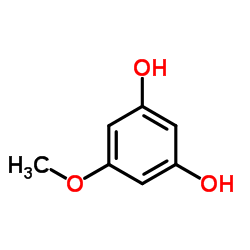Structure-activity relationship of the tocopherol-regeneration reaction by catechins.
Kazuo Mukai, Shuji Mitani, Keishi Ohara, Shin-Ichi Nagaoka
Index: Free Radic. Biol. Med. 38(9) , 1243-56, (2005)
Full Text: HTML
Abstract
The reaction rates (k(r)) of 5,7-diisopropyl-tocopheroxyl radical (Toc) with catechins (epicatechin (EC), epicatechin gallate (ECG), epigallocatechin (EGC), epigallocatechin gallate (EGCG)) and related compounds (methyl gallate (MG), 4-methylcatechol (MC), and 5-methoxyresorcinol (MR)) have been measured by stopped-flow spectrophotometer. The k(r) values increased in the order of MR < < MG < EC < MC approximately ECG < EGC < EGCG in ethanol and 2-propanol/H(2)O (5/1, v/v) solutions, indicating that the reactivity of the OH groups in catechins increased in the order of resorcinol A-ring < < gallate G-ring < catechol B-ring < pyrogallol B-ring. The catechins which have lower oxidation potentials show higher reactivities. The rate constants for catechins in micellar solution showed notable pH dependence with one or two peaks around pH 9-11, because of the dissociation of various phenolic hydroxyl protons in catechins. The structure-activity relationship in the free-radical-scavenging reaction by catechins has been clarified by the detailed analyses of the pH dependence of k(r) values. The reaction rates increased remarkably with increasing the anionic character of catechins, that is, the electron-donating capacity of catechins. The mono anion form at catechol B-and resorcinol A-rings and dianion form at pyrogallol B-and gallate G-rings show the highest activity for free-radical-scavenging. It was found that catechins (EC, ECG, EGC, and EGCG) have activity similar to or higher than that of vitamin C in vitamin E regeneration at pH 7-12 in micellar solution.
Related Compounds
| Structure | Name/CAS No. | Molecular Formula | Articles |
|---|---|---|---|
 |
flamenol
CAS:2174-64-3 |
C7H8O3 |
|
O-demethylation by the homoacetogenic anaerobe Holophaga foe...
1994-12-15 [Eur. J. Biochem. 226(3) , 945-51, (1994)] |
|
Total synthesis of isorobustin. Barton DHR, et al.
[Tetrahedron Lett. 31(51) , 7449-52, (1990)] |
|
Synthesis of linear and angular benzofurocoumarins. Teran C,...
[Synthesis 1997(12) , 1384-86, (1997)] |
|
Stopped-flow kinetic study of the aroxyl radical-scavenging ...
2008-06-25 [J. Agric. Food Chem. 56(12) , 4406-17, (2008)] |